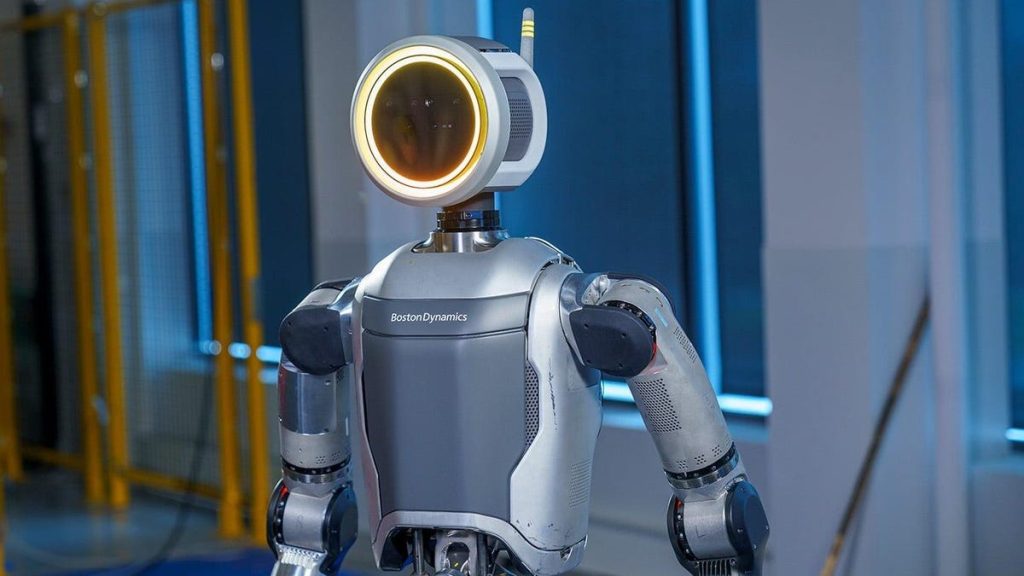Boston Dynamics recently announced the retirement of its humanoid robot HD Atlas, which had been in operation for 11 years. The company introduced its successor, an all-electric Atlas, which is stronger and has a wider range of motion than its predecessor. One notable feature of the new Atlas is its ability to stand up completely from a prone position, something HD Atlas was unable to do. However, the way the robot achieves this has caused some people to feel creeped out. Instead of rolling over and pushing itself up with its arms, the new Atlas bends its legs backward and rotates its knee and hip joints almost completely around before pushing itself up. The robot displays an eerie movement as it stands up, with its head turning 180 degrees towards the camera. These movements have led to the robot being described as “oddly terrifying” on social media platforms.
Boston Dynamics’ CEO, Robert Palter, stated in an interview that the intent behind the design of the new Atlas was for it to not be human-like. The company wanted to create a robot with a higher level of motion than any living creature on the planet. The video showcasing the Atlas robot standing up demonstrates the success of this goal, with the robot’s movements being distinctly non-human. Despite the unsettling reactions from some viewers, the new electric Atlas represents a significant advancement in robotics technology. It joins Boston Dynamics’ lineup of robots, including the popular robot dog Spot, in showcasing the company’s innovation and capabilities in the field of robotics.
The introduction of the new Atlas robot has sparked discussions and reactions on various online platforms, including social media and technology forums. The robot’s movements and abilities have impressed some viewers with the advancements in robotics technology, while others have found the actions of the Atlas to be unsettling and strange. The unique way in which the Atlas stands up from a prone position, with its legs bending backward and hip joints rotating, has been a point of interest and discussion among robotics enthusiasts. The robot’s ability to walk backwards while unfurling its body adds to the intrigue and curiosity surrounding its design and capabilities.
As Boston Dynamics continues to push the boundaries of robotics technology, the introduction of the new electric Atlas represents a significant milestone in the field. The company’s focus on creating robots with advanced levels of motion and capabilities sets them apart in the industry. The success of the new Atlas in achieving its intended goals of non-human-like movements and impressive physical abilities demonstrates Boston Dynamics’ commitment to innovation and excellence in robotics. While the reactions to the new Atlas may vary among viewers, its introduction highlights the ongoing advancements and evolution of robotic technologies in today’s world.
Overall, the retirement of the HD Atlas robot and the introduction of its successor, the all-electric Atlas, signal a new era in robotics technology. With improved strength, range of motion, and unique capabilities, the new Atlas represents a significant step forward in the field of robotics. Boston Dynamics’ ability to design robots with innovative features and cutting-edge technology continues to impress and intrigue audiences worldwide. The company’s commitment to pushing the boundaries of what is possible in robotics sets them apart as a leader in the industry. The debut of the new Atlas robot marks yet another milestone in Boston Dynamics’ journey towards creating groundbreaking robotic systems for various applications.


